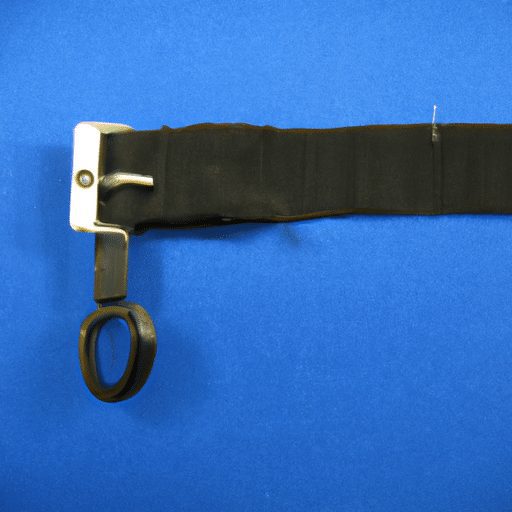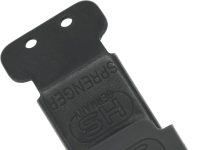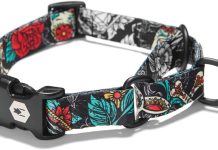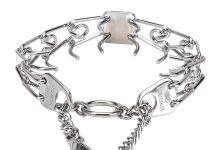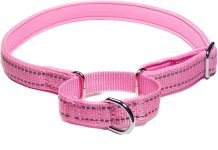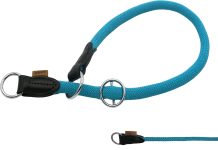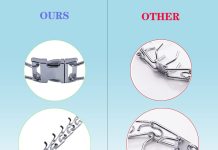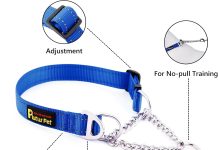Curious about the distinction between a front-clip and a back-clip harness? Wondering which one is the right choice for your furry friend? Look no further! In this article, we’ll provide you with a clear explanation of the key dissimilarities between these two types of harnesses, helping you understand their distinct benefits and functionalities. Whether you’re a seasoned pet owner or new to the world of harnesses, we’ve got you covered. So, let’s jump right in and discover the world of front-clip and back-clip harnesses!
Front-clip harness
Table of Contents
Design and function
A front-clip harness is designed to have the leash attached to a ring located on the front of the dog’s chest. This position allows for better control and steering during walks or training sessions. The harness is typically made of sturdy materials such as nylon or padded fabric to provide comfort and distribute pressure evenly across the chest.
Benefits and drawbacks
One of the main benefits of a front-clip harness is that it helps to reduce pulling. When the leash is attached to the front of the dog’s chest, any forward movement or pulling force will naturally turn the dog towards the side, making it uncomfortable to continue pulling. This redirection helps in training the dog to walk politely on a leash. Additionally, front-clip harnesses are generally more secure and harder for dogs to escape from compared to back-clip harnesses.
However, there are a few drawbacks to consider. Some dogs may find the sensation of the leash being attached to the front of their body uncomfortable or unfamiliar at first. It may take some time for them to adjust and feel completely at ease with this type of harness. Additionally, front-clip harnesses may not be suitable for dogs that have a tendency to lunge or pull excessively, as the redirection of movement may not be as effective in these cases.
Suitable for
Front-clip harnesses are suitable for a wide range of dogs, including those who tend to pull or have a strong prey drive. They are particularly useful for medium to large-sized breeds that require better control during walks. Front-clip harnesses can also be beneficial for dogs undergoing leash training or those with reactivity issues, as the design helps in redirecting their focus and managing their behavior more effectively.
Training considerations
When using a front-clip harness for training purposes, it is important to remember that it is not a magical solution to eliminate pulling overnight. While the harness helps to discourage pulling, it is still necessary to combine it with positive reinforcement training techniques and consistent practice. Rewarding your dog for walking calmly by your side and redirecting their attention away from distractions will help reinforce good leash manners.
Proper fitting and adjustment
To ensure that a front-clip harness is both comfortable and effective, proper fitting and adjustment are crucial. Start by measuring your dog’s girth, which is the circumference of their chest just behind the front legs. Most harnesses come with size charts, and it is essential to choose the appropriate size based on your dog’s measurements. Adjust the straps to fit snugly but not too tightly, leaving enough room for your dog to move and breathe comfortably.
Popular front-clip harness brands
There are several popular brands that offer high-quality front-clip harnesses. Some examples include the PetSafe Easy Walk Harness, Ruffwear Front Range Harness, Julius-K9 Powerharness, and Kurgo Tru-Fit Smart Harness. It’s important to research and read reviews to find the best fit for your dog’s needs and size.
Back-clip harness
Design and function
A back-clip harness, as the name suggests, has the leash attachment point located on the dog’s back, near their shoulder blades. The design of this harness allows for a more natural range of motion, making it comfortable for dogs during walks or other activities. Back-clip harnesses are typically made of lightweight materials, providing a balance between durability and freedom of movement.
Benefits and drawbacks
Back-clip harnesses offer several advantages. They are easy to put on and take off, making them convenient for daily walks. The positioning of the leash attachment on the back helps to distribute pressure evenly, reducing the strain on the dog’s neck and providing a more comfortable walking experience. Additionally, back-clip harnesses are generally suitable for dogs of all sizes and shapes.
However, back-clip harnesses may not be as effective in reducing pulling compared to front-clip harnesses. The leash attachment at the back allows dogs to maintain their forward momentum, making it easier for them to continue pulling without any redirection. This type of harness may not be suitable for dogs that have a strong pulling instinct or require more control during walks.
Suitable for
Back-clip harnesses are suitable for dogs that do not have a pulling tendency and have already learned to walk politely on a leash. They are particularly ideal for smaller or more sensitive dogs that may feel restricted or uncomfortable with a front-clip harness. Dogs that are not undergoing leash training or do not have behavior issues may also benefit from the freedom of movement provided by a back-clip harness.
Training considerations
Although a back-clip harness is less effective in reducing pulling, it can still be used in conjunction with positive reinforcement training to reinforce good leash manners. The focus of the training should shift towards teaching the dog to walk politely without relying solely on the harness for control. Consistency, patience, and rewarding desirable behavior will play a vital role in successful training with a back-clip harness.
Proper fitting and adjustment
To ensure a comfortable fit, it is important to properly adjust a back-clip harness. Measure your dog’s girth and choose the appropriate size based on the manufacturer’s size chart. Adjust the straps so that the harness fits snugly but does not restrict your dog’s movement. It is crucial to regularly check and readjust the fit as your dog grows or if any changes in weight occur.
Popular back-clip harness brands
When it comes to back-clip harnesses, there are several reputable brands to consider. Some popular options include the Rabbitgoo Dog Harness, Blueberry Pet Mesh Padded Harness, Puppia Soft Dog Harness, and Chai’s Choice Outdoor Adventure Harness. Each brand offers different features and sizes, so be sure to do your research and choose the most suitable one for your dog’s needs.
Comparison
Control and steering
In terms of control and steering, the front-clip harness has a clear advantage. The positioning of the leash attachment on the chest allows for better control over the dog’s movements, especially when they tend to pull. The front-clip design helps redirect the dog’s forward motion, making it easier to guide them and discourage pulling behavior. On the other hand, a back-clip harness provides less control and steering ability, making it more suitable for dogs that already walk politely on a leash.
Reducing pulling
Both front-clip and back-clip harnesses can help in reducing pulling to some extent, but the front-clip harness tends to be more effective. The front attachment point of the leash naturally turns the dog’s body to the side when they pull, making it uncomfortable to continue pulling forward. This redirection discourages pulling behavior over time. While a back-clip harness may not offer the same level of control, it can still be used in combination with training techniques to reinforce good leash manners.
Distribution of pressure
When it comes to distributing pressure, both front-clip and back-clip harnesses have their advantages. Front-clip harnesses typically distribute pressure evenly across the chest, avoiding strain on the neck or throat. This can be beneficial for dogs prone to respiratory issues or those that tend to pull excessively. Back-clip harnesses, on the other hand, distribute pressure more evenly along the back and shoulders, providing a comfortable and balanced walking experience for dogs.
Escape-proof features
Front-clip harnesses generally have more escape-proof features compared to back-clip harnesses. The design and positioning of the straps and buckles make it harder for dogs to wiggle out of the harness. This makes front-clip harnesses a safer option for dogs that may be prone to slipping their harnesses or have a history of escaping. Back-clip harnesses, while more convenient in terms of ease of use, may not offer the same level of security against escape.
Training assistance
Both front-clip and back-clip harnesses can assist with training, but in different ways. A front-clip harness offers more immediate feedback to the dog when they pull, helping to redirect their focus and discourage unwanted behavior. It is a useful tool for training sessions focused on loose leash walking and behavior management. On the other hand, a back-clip harness is more suitable for dogs that have already been trained to walk politely on a leash. It allows for a more natural range of motion, making it easier for dogs to move comfortably during walks or other activities.
In conclusion, the choice between a front-clip and back-clip harness depends on the individual needs of your dog and your specific training goals. If your dog tends to pull on walks or requires better control and redirecting of their movements, a front-clip harness may be the better option. However, if your dog walks calmly on a leash and prefers freedom of movement, a back-clip harness can provide a comfortable and enjoyable walking experience. Regardless of the harness type, remember to fit and adjust it properly, combine it with positive reinforcement training, and prioritize your dog’s comfort and safety.

